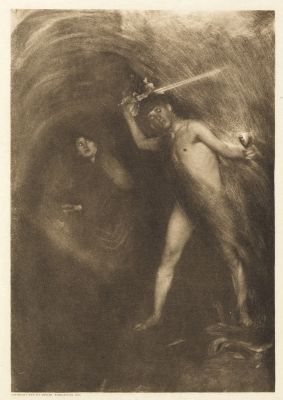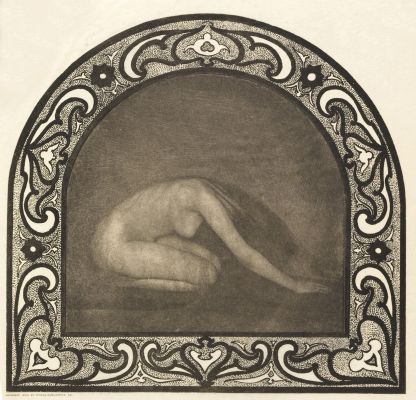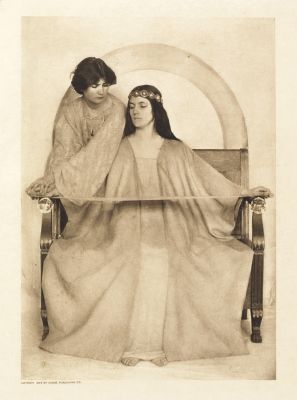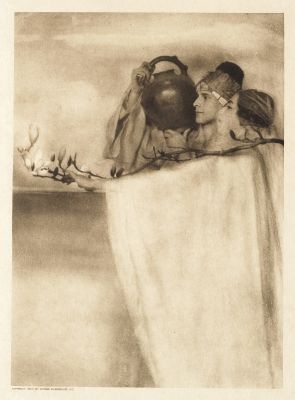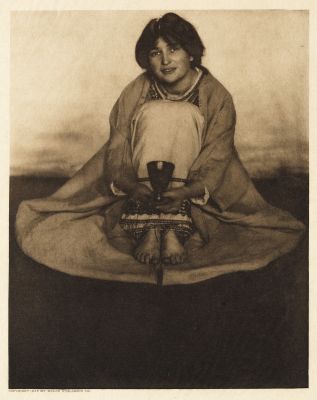
Title
Plate IArtist
Hanscom, Adelaide (American, 1876-1932)Publication
The Rubaiyat of Omar KhayyamDate
1905Process
Photogravure (tissue)Image Size
15 x 10.1 cm
Adelaide Hanscom achieved her luminous and daring visionary allegorical tableaux style through sophisticated manipulation of her photographs including combination printing and painting directly on the glass plate negatives. The in this volume of The Rubaiyat of Omar Khayyam, delicate gravures are printed on tissue and tipped into the book which is notable for its Arts-and-Crafts design, the subjects (both nudes and artists of the time like Joachim Miller), and the fact that the photographer was a woman. The first edition was printed on at least two different types of tissue, one limp and thin, and the other stiff and parchment-like. Dodge published many subsequent editions with Hascom’s photographic illustrations, in at least three smaller sizes, all with halftones, sometimes in color. In a 1912 edition, Blanch Cumming, another San Francisco photographer, was inexplicably also credited, although no additional illustrations appeared. In 1906, the San Francisco earthquake and fire destroyed Hanscom’s entire studio, including her Rubaiyat negatives. A decade later she provided similarly dreamy illustrations for an edition of Elizabeth Barrett Browning’s Sonnets from the Portuguese, but her Rubaiyat images represent most of Hanscom’s print legacy, as her silver prints are rare.
